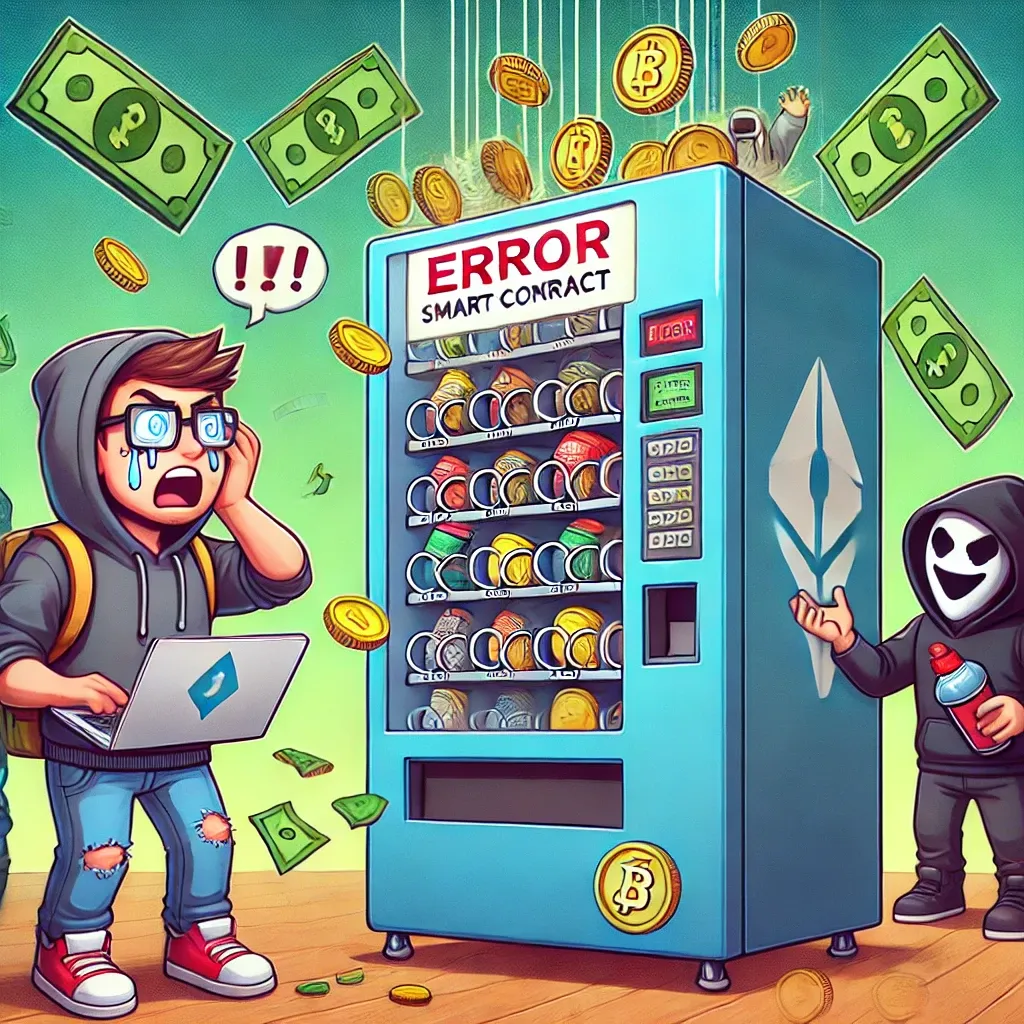Smart contracts, hailed as the cornerstone of blockchain innovation, are supposed to be infallible. But what happens when they aren't? Imagine losing millions due to a single overlooked vulnerability. Welcome to the fascinating and sometimes catastrophic world of smart contracts. Let’s unravel a tale where technology’s promise clashes with human error—with a bit of humor to ease the sting.
How Smart Contracts Are Supposed to Work
A smart contract is like a vending machine for agreements. You put in the money (or crypto), press a button (execute the contract), and out comes the snack (result) without a middleman. In theory, it’s perfect. But what if the vending machine has a software bug and spits out your chips along with 50 other bags? Now, imagine those chips are worth $50 million.
The Promises of Blockchain Technology
-
Decentralization: Say goodbye to banks and hello to code.
-
Immutability: Transactions are set in stone (or rather, in blocks).
-
Transparency: Everyone can see the code and the transactions.
But transparency doesn’t equal perfection, as you’re about to see.
The Fatal Flaw That Cost Millions
Here’s where our cautionary tale begins. Despite rigorous testing, smart contracts can fall victim to:
1. Coding Errors
Think of smart contracts as IKEA furniture instructions. One misplaced screw and your bookshelf (or financial ecosystem) collapses. Here are the most infamous blunders:
-
Reentrancy Attacks: A hacker drains funds repeatedly by exploiting a poorly coded withdrawal function. (Yes, it’s as bad as it sounds.)
-
Integer Overflows: Where math goes rogue, and suddenly, your tiny transaction is worth infinity.
2. Unchecked External Calls
Smart contracts often rely on external data (like price feeds). If this data is compromised, it’s like letting a thief write the inventory list for your bank vault.
3. Overconfidence in Audits
Even the best developers can’t predict every scenario. Some contracts are so complex they’re practically begging for a hacker to say, “Challenge accepted.”
Real-Life Horror Stories
The DAO Hack (2016)
-
Loss: $60 million.
-
What Happened: A reentrancy bug allowed a hacker to drain funds from one of Ethereum’s first decentralized autonomous organizations.
-
The Fallout: A hard fork of the Ethereum blockchain—and endless debates about immutability.
Poly Network Exploit (2021)
-
Loss: $610 million (later returned by the hacker, dubbed a "white hat").
-
What Happened: A flaw in the cross-chain messaging system.
-
The Lesson: Not all hackers wear black hats, but maybe don’t leave the vault door open next time.
Nomad Bridge Hack (2022)
-
Loss: $190 million.
-
What Happened: A coding error in the smart contract allowed anyone to "spoof" transactions.
-
The Punchline: Chaos erupted as multiple "hackers" drained funds simultaneously. It was like a Black Friday sale—but for crypto theft.
How to Avoid Catastrophes
Smart contracts can be a goldmine or a landmine, depending on how they’re built. Here’s how to reduce risks:
1. Test, Then Test Again
-
Use fuzzing tools to simulate every possible input.
-
Perform formal verification to mathematically prove the contract’s correctness.
2. Hire Ethical Hackers
Pay professionals to break your code before the bad guys do. It’s like hiring someone to rob your house to see if your locks work.
3. Embrace Simplicity
-
The fewer lines of code, the fewer chances for bugs.
-
If your smart contract reads like "War and Peace," you’re doing it wrong.
4. Diversify Risk
Don’t put all your digital eggs in one contract. Use multisignature wallets and decentralized insurance platforms.
Conclusion: Trust the Code (But Verify It)
Smart contracts are the future of decentralized finance, but they’re not immune to human error. A single flaw can turn a revolutionary idea into a multimillion-dollar fiasco. So, the next time you hear someone say, “The code is law,” remind them that even laws need amendments.
Remember: In the world of smart contracts, trust isn’t earned—it’s debugged.
